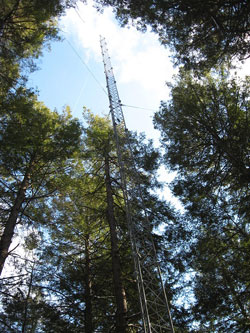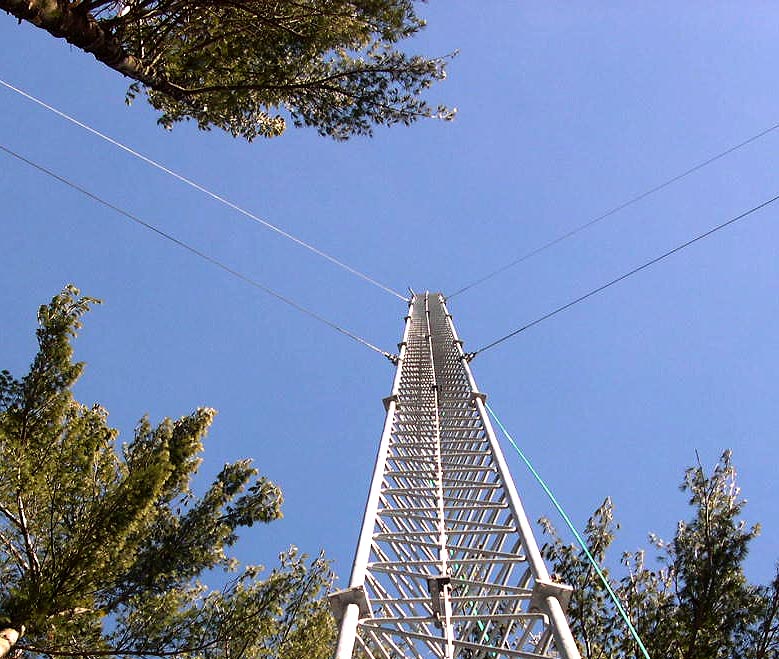Collecting eddy flux and other data, Harvard Forest currently maintains 4 research towers.
To work on or around the towers, first you must contact Mark VanScoy AND fill out a Research Project Application.
All users of the walk-up towers must abide by the Tower Safety Guidelines. In addition, gas tanks used for tower research must follow the Gas Tank Protocol.
Environmental Measurement Station (EMS) Flux Tower
Atmospheric measurements have been made from this 30m eddy flux tower since 1990. Carbon dioxide and many other atmospheric trace gases (e.g. methane and other hydrocarbons, nitrogen oxides, and ozone) are measured at this site.
Hardwood Walk-Up Tower
This canopy-level walk-up tower was installed October 2014. It is located 400 m SW of the EMS tower and 240 m SW of the NEON tower. Dimensions: 92’ h x 7’ wide x 13’ long (13 stages of 7’ each).

Hemlock Flux Tower
This 33 m Rohn 45G SR tower was installed in October 2013. It is located in a mature hemlock stand approximately 0.5 km from the EMS tower and 10 m to the east of the hemlock walk-up tower. Flux measurements were started in July 2014 along with basic wind, temperature, relative humidity, and light measurements.

Barn Tower
This 36 m Rohn 65G was installed in September 2009. It serves as the starting point of the Harvard Forest Field Wireless network and a platform for above canopy research.

Hemlock Walk-Up Tower (retired)
This canopy-level walk-up tower was in operation beginning in November 2000 and was removed in April 2024 due to structural deficiencies and the completion of much of its associated research. The remaining research equipment was relocated to the Hemlock Flux Tower. The tower was 71.5′ tall x 3′ wide x 5′ long (11 stages of 6.5′ each).
